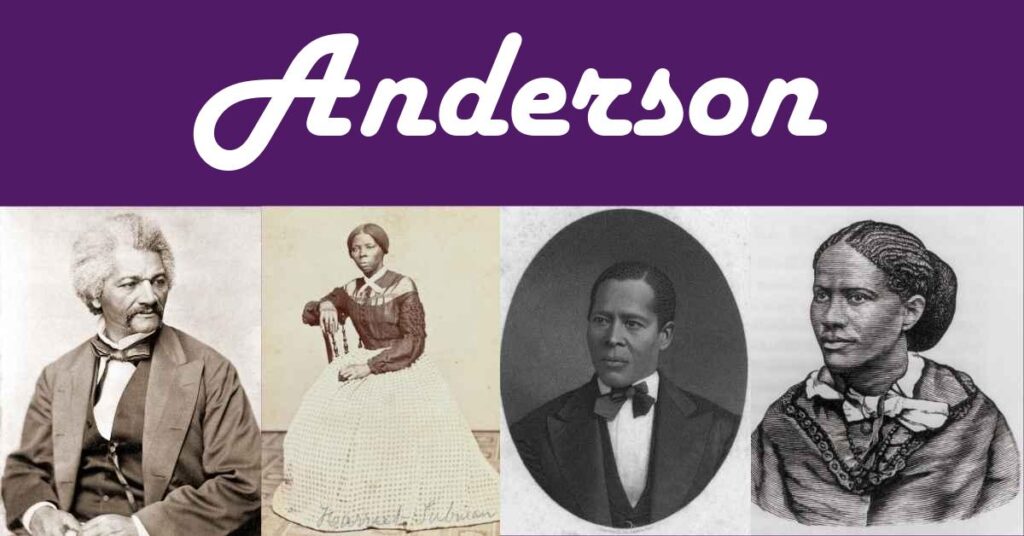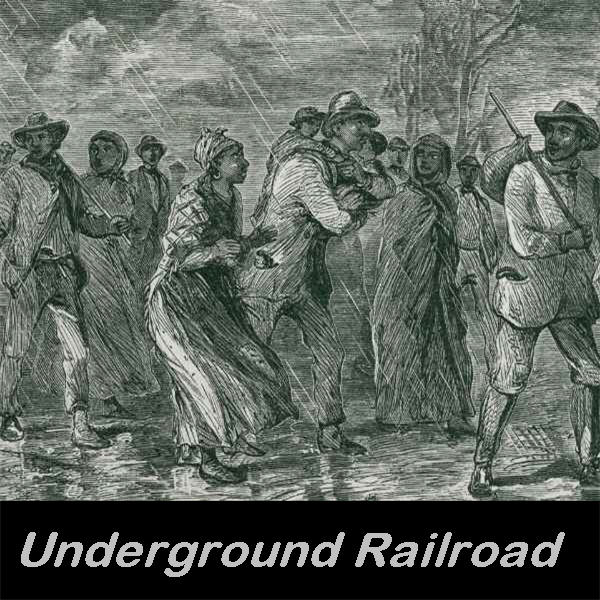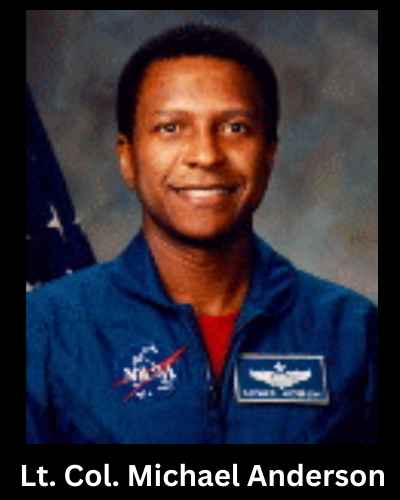The 2010 U.S. Census recorded 148,488 black Americans with Anderson as their last name. That represented 19% of the total of 784,404 entries.
This article compares census numbers before and after the Civil War. We also look at historic African American people named Anderson in the last three centuries.
We end with a review of early records of black military service in the United States.
Anderson Before The Civil War
The 1850 census was the first to record all free members of households together. Before this, people who were not white were not named in the federal census.
In 1850, there was a box to enter color on the census. There were three categories: white, black, and mulatto. The third term is the language of the time, and I will use mixed in this article.
If you are researching your black Anderson ancestors in census archives, be sure to check the two non-white categories. Do not assume that the people recording the information were always correct.
1850 Federal Census
There were 1,950 people named Anderson who were recorded as black in the 1850 census. 781 were recorded as mixed.
Because they are in the main federal census, we know that they were free citizens.
There was a total of 41,618 free citizens named Anderson that year. There would be one more census in 1860 before the Civil War.
After The Civil War

The 1870 census was the first survey after the Civil War and the Emancipation Proclamation. All African Americans were included.
Those who were omitted in 1850 and 1860 because they were enslaved were now recorded.
19,791 people named Anderson were recorded in the 1870 census as black and 2,843 as mixed.
There was a total of 101,395 people with the name.
Anderson In The 1900 And 1940 Census
The mixed category was dropped in 1900, so we just need to look at the black numbers this time.
The 1900 census recorded 41,789 people with the last name Anderson as black within a total of 283,093 that year.
By the way, the mixed category returned in the 1910 and 1920 censuses. It was dropped again in 1930, but replaced with extra categories for colored and non-white in a way that seems confusing now.
This changed again in 1940 and we can simply focus on one black category.
The 1940 census recorded 56,013 people named Anderson as black within a total of 472,288.
Historic Black Figures With The Anderson Surname

Here are some notable African American people in history with Anderson as their last name.
Aaron Anderson
- Born: 1811
- From: Arkansas
- Died: 1886
Aaron Anderson grew up on a farm in Arkansas but spent much of his adult life in Pennsylvania. He was a cook before he enlisted in his early fifties with the U.S. Navy in April 1863.
Anderson served with the Potomac Squadron, a flotilla of ships that disrupted Confederation shipping on the Potomac and in Chesapeake Bay.
A month before the end of the Civil War, Anderson was an oarsman on a smaller boat launched to attack Confederate forces with a howitzer.
It was a daring raid under enemy fire. Anderson was one of two men on the boat who was awarded the Congressional Medal of Honor. This is the citation:
Participating with a boat crew in the clearing of Mattox Creek, Anderson carried out his duties courageously in the face of a devastating fire which cut away half the oars, pierced the launch in many places and cut the barrel off a musket being fired at the enemy.
U.S. Army Medals
His naval records have him incorrectly named as Sanderson. However, the Navy got it right when they featured Anderson on a recruitment poster in 1970.

More black medal recipients
Here are some more black naval servicemen who were awarded the Medal of Honor:
- William H. Brown during the Battle of Mobile Bay
- Thomas English on the U.S.S. New Ironsides
Elijah Anderson
- Born: 1808
- From: Fluvannah County, Virginia
- Died: 1861
Elijah Anderson was a free black blacksmith who was light enough to disguise himself as a slave owner.
He escorted many hundreds of enslaved people in Kentucky to freedom in Ohio. He was arrested in 1861 and later found dead in his cell.
The Underground Railroad was a network of safe houses and travel routes organized by many church and community leaders, civil rights activists, and abolitionists.
Thousands of enslaved people were helped to escape from the South.

Caroline Still Anderson
- Born: 1848
- From: Philadelphia
- Died: 1919
Caroline Anderson was the eldest child of the abolitionist William Still.
She attended Oberlin College in Ohio in 1864 when she was fifteen. When she graduated four years later, she was the only black woman in her class.
She married Edward Wiley in 1869, but he suffered from poor health. He died in 1874. His long illness may have influenced her decision to study medicine.
Caroline fought to get access to medical school in Boston despite many obstacles put in front of her. However, she had the full support of her father.
She qualified as a doctor in 1879 and opened a dispensary and practice in Philadelphia.
Caroline married Matthew Anderson and they founded a vocational school, the Berean Institute. Rev. Matthew Anderson wrote about their philosophy of education in an academic journal in 1909.

Other black pioneers in medicine
Here are some other pioneers in health and medicine.
- Rebecca Cole, qualified as a doctor in 1867
- Ida Gray, qualified as a dentist in 1890
- Grace James, first black physician to teach medicine at the University of Louisville
Violette Anderson
Born: 1882
From: London, Britain
Died: 1937
Although Violette Neatley was born in England, she moved as a girl to the United States. Her second husband was Daniel Anderson and she used his name in her working life.
Violette worked as a court reporter for fifteen years after graduating college in Chicago. This spurred her to get a law degree and open a practice in 1920.
As well as running a court reporting agency, Violette Anderson worked as a prosecuting attorney. She was admitted to U.S. Supreme Court bar in 1926.
Anderson is the first African American woman to be added to the Supreme Court rolls.
Other pioneering African American lawyers
Michael Anderson
- Born: 1959
- From: Plattsburgh, New York
Michael Anderson’s father worked on Air Force bases in New York and Washington servicing the jet fighters. Michael studied astronomy and physics at the University of Washington. When he graduated in 1981, he joined the Air Force as a commissioned officer.
He started pilot training in 1986. When he qualified, he flew the Looking Glass – the airborne command center for nuclear weapons.
Michael Anderson was selected by NASA in 1994 for astronaut training. His first Space Shuttle mission was on the Endeavour in 1998, which docked with the Mir Space Station.
In January 2003, Michael flew on the Space Shuttle Columbia as payload commander. He was also in charge of over eighty scientific experiments conducted on the space flight.
But the return and re-entry of the Columbia on the first day of February was catastrophic. The shuttle burned and disintegrated with the loss of Anderson and his six fellow astronauts.

Other black astronauts
Other black astronauts
- Bernard Harris (first black astronaut to walk in space)
- Robert Lawrence (died the same year he was selected for NASA’s astronaut program)
- Winston Scott (two spacewalks)
- Stephanie Wilson (three space flights)
Anderson In Black Military Records
Military records are a rich resource of for family history research. Here are examples of the Anderson surname from three different military services:
- Black civil war sailors
- Buffalo soldiers
- Tuskegee airmen
Black Civil War Sailors
The National Parks Service has a free archive of African American sailors during the Civil War.
The information includes their age, height, rank, occupation, and where and when they enlisted. It also includes every ship that they served on.
You can search the database on the National Parks website.
I’ve already covered Aaron Anderson as a notable figure in history. Let’s look at two more African Americans who served at that time.
John F. Anderson
One of the earliest entries for Anderson was for John F. Anderson from Flatbush, Long Island. He enlisted in December 1861 at New York when he was aged 16.
The record shows that John F. was assigned on October 1863 to the ship Colorado.
His occupation before enlisting was as a Waiter. His naval rank was 1st Class Boy.
“1st Class Boy” was the rank given to young men who enlisted when they were under eighteen.
Isaiah Anderson
One of the later entries was for a sailor who enlisted at Philadelphia in February 1865. Isaiah was aged 26 and was from Philadelphia, Pennsylvania.
He was assigned to the ship Saranac on March 1864.
His occupation before enlisting was as a Mariner/Waiter/Servant. His naval rank was Landsman.
“Landsman” was the lowest rank at the time and was given to recruits with little sea experience.
Buffalo Soldiers

Five regiments for black soldiers were formed during the Civil War. They were known as the Buffalo Soldiers.
Their records are part of the national archive of military monthly returns. The information includes the year and place of birth, where they enlisted, their occupation, and their height.
One of the earliest military entries for Anderson was in February 1867. George Anderson was a Private in the Tenth Cavalry. He was stationed in February 1867 at Fort Learmouth, Kansas.
One of the later entries was in May 1915. Roudie Anderson was a Private in the Ninth Cavalry.
If you are researching military ancestors, there is a free index of these records on Ancestry.com and FamilySearch.org.
You have to create an account on either website, but you do not need to pay for the Buffalo Soldiers archive.
Tuskegee Airmen

The Tuskegee Airmen were military personnel who served at the Tuskegee Army Airfield or related programs.
Nearly one thousand black pilots graduated from the Tuskegee Institute. The photograph above (from the Library of Congress) shows a class in session.
They flew single-engine fighter planes or twin-engine bombers. 352 fought in combat.
Rayfield Anderson graduated from the Tuskegee Institute in February 1944. He qualified as a bomber pilot. Rayfield was from Indianapolis, Indiana.
Paul Anderson came from Woodbine, New York. He graduated in October 1944 as a bomber pilot.
You can find a full list of graduate pilots in our list of Tuskegee Airmen.